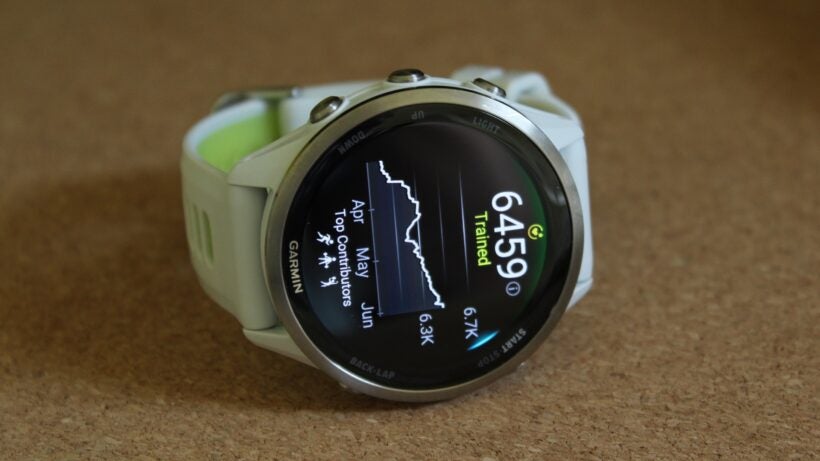Find out how you can improve the measure of your staying power.
The VO2 max estimate on your Garmin watch may provide a decent insight into your aerobic endurance, but Endurance Score is essential for adding a bit more context.
Now available on a growing number of premium Garmin watches, Endurance Score provides an unrivalled insight into how your body is responding to training efforts.
With a rolling score that updates after each workout, Garmin’s Endurance Score is the ideal way to see whether your training routine is having a positive impact on your overall ability to sustain an activity for a long period.
There’s plenty to get to grips with, though, which is why we’ve covered everything there is to know in the sections below.
SQUIRREL_PLAYLIST_10207701
Which Garmin watches support Endurance Score?

Endurance Score launched in 2023, so Garmin watches with this feature are still limited. However, it is rolling out to more all the time, so stay tuned for updates in 2025.
The current list of Garmin watches that support Endurance Score include:
- Forerunner 255 series/265 series/570/955 series/965/970
- Forerunner 955 series
- Forerunner 965
- Forerunner 970
- Fenix 7 & Fenix 7 Pro series
- Fenix 8 series
- Epix (Gen 2) & Epix Pro (Gen 2) series
- Enduro 2/3
- MARQ (Gen 2) collection
What is Garmin’s Endurance Score?

While something like Hill Score is a purely running-focused insight, Endurance Score is built to register your efforts from any sport or activity over time.
You can also gain an insight into which three activities are contributing most to your Endurance Score from the watch, with the icons constantly updating based on your recent tracked workouts, as shown above.
So, how does Endurance Score differ from something like VO2 max, which we mentioned above?
While VO2 max is the defining figure of your aerobic fitness, it’s not necessarily the best indicator of performance, especially in long-distance events.
Endurance Score can provide additional insight into this figure. Whether metabolic, neural, or muscular, there are adaptations that enhance endurance beyond simply improving the aerobic base.
Explained: How Endurance Score is calculated

Your aerobic base, as discussed above, is the starting point for calculating your Endurance Score – and it’s still the factor that contributes most to your score.
However, Garmin’s Endurance Score also factors in your activity history from the perspective of development, accounting for how difficult a workout was and the likelihood to which it contributed to fatigue resistance and the ability to perform sustained effort.
Both long and short-term training periods are accounted for in the calculation, Garmin says, with the former stretching back to around three months of data and the latter focused on the last two weeks of workouts.
However, your longest recorded activities also carry significant meaning in determining your score.
Our experience: Get the most out of Endurance Score
Since its launch in 2023, Endurance Score has proven invaluable to our training, both in marathon blocks and during months off due to injury. During the early stages of a training block, which are typically dominated by base-building miles, we’ve found that it provides valuable post-run feedback that wouldn’t otherwise be available.
It’s helped us adhere to the plan instead of going out for a threshold or VO2 max-focused run to satisfy our urge to push ourselves.
It’s also kept us informed during times of injury, when our endurance naturally plummeted without sustained efforts. While disheartening, this also helped to shape our expectations when we returned to training.
The limitation of the Endurance Score, based on our experience, is that it provides limited actionable feedback. Even two years since its release, Garmin hasn’t added any further insights from the score. As with many of Garmin’s metrics, you’re left to interpret on your own what kinds of workouts are increasing or decreasing your score.
And while it’s simple to work out that longer efforts will yield the most significant increases in your score, and not performing them will result in your score plateauing or declining, you’ll have to keep track of this manually instead of being notified or receiving a prompt via Garmin Connect’s AI.




